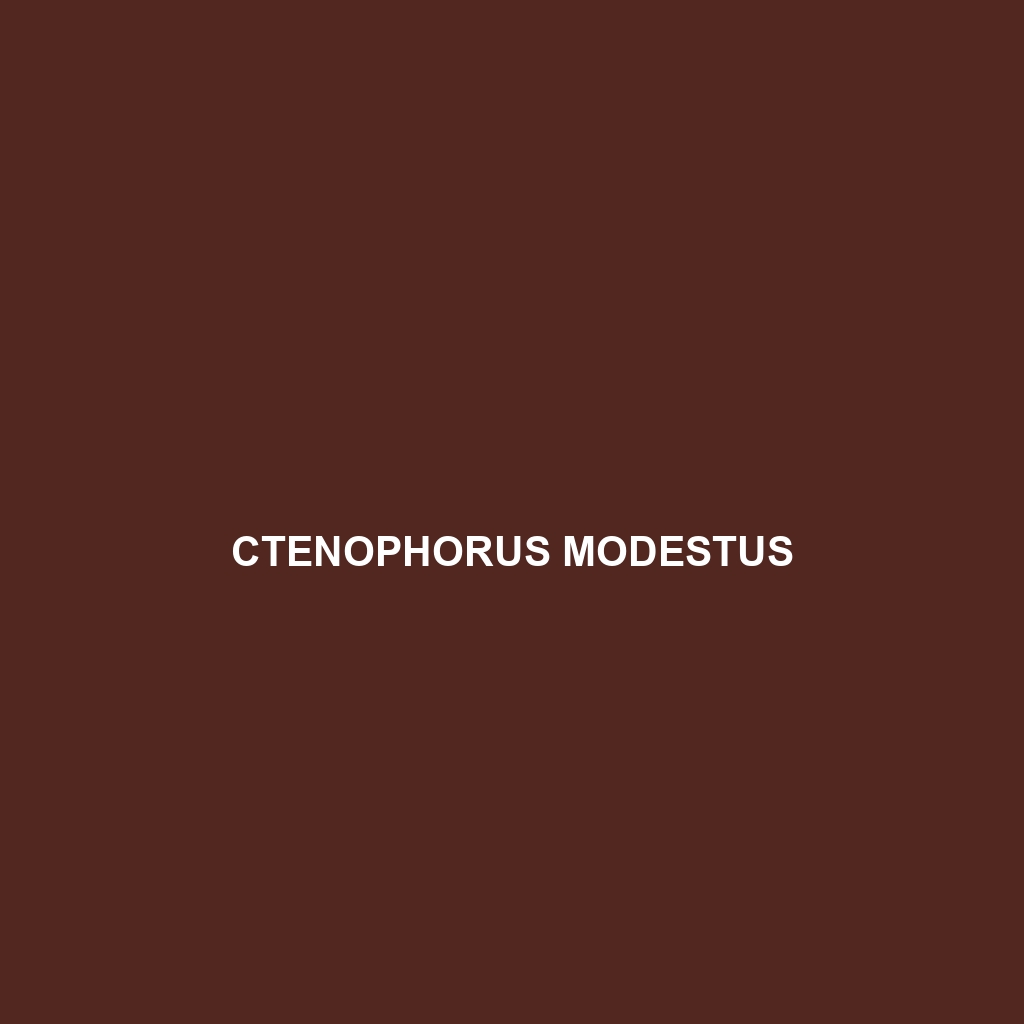Ctenophorus modestus: The Modest Ctenophorus
Common Name: Ctenophorus modestus
Scientific Name: Ctenophorus modestus
Habitat
Ctenophorus modestus, commonly known as the Modest Ctenophorus, primarily inhabits the arid and semi-arid regions of Australia, particularly in the Eastern and Central zones. This species is found in a variety of environments, including woodlands, scrublands, and grassy areas. The typical habitat features well-structured vegetation that provides essential cover and perching spots for this lizard.
Physical Characteristics
The Modest Ctenophorus reaches an average length of 10 to 14 centimeters (about 4 to 5.5 inches). It exhibits a distinct color palette that ranges from sandy brown to gray, often adorned with dark markings or spots that help it blend into its surroundings, providing excellent camouflage against predators. Its elongated body, flat head, and strong limbs contribute to its agile movements, making it a fascinating subject for herpetologists and reptile enthusiasts alike.
Behavior
Ctenophorus modestus is known for its active and diurnal lifestyle, spending the majority of its day basking in sunlight and hunting for insects. This species is territorial and often displays behavioral patterns such as head bobbing and push-up displays during mating rituals or while defending their territory. They exhibit a unique escape response, quickly darting into crevices or tall grasses when threatened.
Diet
The diet of Ctenophorus modestus consists predominantly of insects, including beetles, ants, and grasshoppers, making them important insectivores in their habitats. Their feeding habits are crucial in controlling insect populations, contributing to the health of their ecosystems. They are known to forage actively during the warmer parts of the day, using their keen eyesight to locate prey.
Reproduction
Ctenophorus modestus exhibits seasonal reproduction, with mating typically occurring in the spring. Females lay clutches of 3 to 6 eggs in sandy substrates, which they bury for incubation. The eggs usually hatch within several weeks, and the young lizards emerge fully formed and ready to fend for themselves. Maternal care is limited, highlighting the species’ independent nature from an early age.
Conservation Status
The current conservation status of Ctenophorus modestus is categorized as “Least Concern” according to the IUCN Red List. However, habitat destruction and climate change pose ongoing threats to its population stability. Conservation efforts aimed at preserving natural habitats are essential for safeguarding this species.
Interesting Facts
One unique aspect of Ctenophorus modestus is its ability to change color slightly based on its environment, providing extra camouflage against potential threats. Additionally, this species has a remarkable social structure and often coexists with other lizard species without significant territorial disputes.
Role in Ecosystem
Ctenophorus modestus plays a vital role in its ecosystem by helping to regulate insect populations and serving as prey for larger predators. Its presence contributes to the biodiversity of the regions it inhabits, promoting overall environmental health. By maintaining ecological balance, the Modest Ctenophorus is an important species for conservationists to monitor.
